Spate of disciplinary cases unlikely to erode federal judiciary's prerogative to judge itself.
Miller-McCune LEGAL AFFAIRS by Meghan Gordon - October 24, 2008
One federal judge is staring down impeachment; another presides over his bench despite a criminal indictment on sex charges. Two other robed public servants stood accused of ethical and criminal breaches this year. As the federal judiciary faces one of its heaviest discipline caseloads in some time, do the extreme examples of misconduct reveal a system that can find and weed out its bad actors, or do they just further erode trust in the federal courts?
The judicial misconduct case closest to the ultimate punishment for the lifetime appointees — impeachment — is that of U.S. District Judge Thomas Porteous of New Orleans, a target of at least six years of scrutiny for his actions in a personal bankruptcy and for accepting gifts from lawyers who practiced before him. A panel of the nation's top judges, presided over by Chief Justice John Roberts, found substantial evidence that Porteous repeatedly perjured himself in his bankruptcy, lied on financial disclosures and deprived litigants from knowing that he was accepting thousands of dollars in cash and other gifts from lawyers trying cases in his court. Porteous and his wife, Carmella, used the fake names, "G.T. and C.A. Ortous" to file bankruptcy, hoping to avoid public scrutiny that would come with their names appearing in a list of recent filings. According to a 5th Circuit panel that investigated his case, Porteous came to the bankruptcy with $66,000 in gambling debts and continued to bet without disclosing the new debt in court proceedings. He begged lawyer friends for help, even as three of them were trying a civil case in his division. They chipped in for his son's wedding and paid his airfare and hotel room to attend his son's bachelor party in Las Vegas.
A House Judiciary Committee task force now awaits an investigator's report on the case before deciding whether to advance it closer to an impeachment vote in the full House and a later trial in the Senate. If the case travels the entire journey without his resignation, Porteous would be the first federal judge stripped of his lifetime appointment in two decades and only the 12th in the nation's history. Law scholars say it's possible that going through the extremely rare impeachment process could prop up the public's perception of the judiciary and its ability to police itself, to the extent that the case draws any attention amid the change in administration and the global financial meltdown. While the misconduct investigation took an extremely slow path to Congress, it's only there because of intervention from leadership within the federal courts, in particular the chief judge of the 5th Circuit Court of Appeals. "For people who followed it closely, I think it's fair to say that the 5th Circuit has been pretty vigorous in pursuing this matter," said Carl Tobias of the University of Richmond School of Law. "If the public is concerned that the judiciary can't police itself, this is a pretty good example that it can."
Other recent cases include Judge Samuel Kent of Houston, who pleaded not guilty in September to two counts of abusive sexual contact and one count of attempted aggravated sexual abuse of a court employee; Judge Edward Nottingham of Denver, who resigned Oct. 21 after undergoing four investigations in two years for, among other things, appearing on the client list of a prostitution ring; and Judge Alex Kozinski of San Francisco, who was embroiled in an ethics controversy that questioned whether he could fairly preside over an obscenity case given his own postings of graphic images to his personal Web site. Law professor Charles Geyh of Indiana University said the judiciary must be able to show that it has mechanisms in place to hold bad judges accountable, and the Porteous case serves as an extreme example of that oversight. "We give judges a lot of independence, and judges catch hell for having that independence," said Geyh, who has advised the House Judiciary Committee and was an expert witness on the National Commission on Judicial Impeachments. "They're told, ‘You're a rogue judge. You're an activist judge.' "If what we tell people is we need an independent judiciary so the judges can do their best to follow the rule of law without intimidation, we need to be able to say, ‘But if the judge is corrupt, the judge will be removed and punished.'"
Judicial discipline expert Arthur Hellman of the University of Pittsburgh said this year's cluster of bad judge storylines likely won't catch the attention of even the most informed citizens, and therefore won't have much of an impact on the public perception of the judiciary. "It's still a tiny number of judges, and it's mostly happenstance," he said. (There are 875 judges appointed to lifetime terms in the federal courts, which include the nine on the Supreme Court, 179 on courts of appeals, 678 in district courts and nine on the Court of International Trade.) Lesser cases of misconduct present a murkier picture of the judiciary's discipline record. About 700 complaints roll in each year. If a fraction of losing litigants vent their frustration by blaming the judge, that creates quite a pool of misconduct complaints that are easily dismissed as frivolous. All but a sliver of complaints are reviewed confidentially and thrown out.
In the 12 months ending Sept. 30, 2007, for example, some 841 complaints were filed, of which 752 were concluded by year end. Of the 404 considered by chief judges, 392 were dismissed for being not in conformity with statute, not directly related to a ruling or frivolous; three were marked "appropriate action already taken"; six were marked "action no longer necessary because of intervening events"; and three were withdrawn by the complainant. Of the 348 considered by judicial councils, 344 were dismissed, two were withdrawn and two were marked "ordered other appropriate action." Five cases out of the 841 complaints were sent to a special investigating committee to review. Most of the scant complaints determined to be legitimate remain under seal while chief judges mete out punishments such as reprimands and suspensions. "You have to balance out the public's need to know with the privacy concerns of a particular judge or just the judicial system," Tobias said. Northwestern University law professor James Pfander said that even the whisper of alleged judicial misconduct would inflict enormous injury to a judge's reputation. Yet such secrecy, no matter how integral it is to the judiciary's ability to act independently, will always make it difficult for the public to judge for itself whether the court system sets a rigorous ethical standard for those who rule its benches. "We try to throw up some kind of shield to protect judges from scurrilous complaints," Pfander said. "It's important for the system not only to do the right thing but to be seen doing the right thing." In building a system for processing judicial complaints, the courts had no constitutional guidance.
The framers paid little attention to judicial discipline except to lump it in with "all civil officers of the United States" in a clause in Article II created to address misbehaving executives who "shall be removed from office on impeachment for, and conviction of, treason, bribery, or other high crimes and misdemeanors." Article III then calls for "one supreme Court" and permits Congress to "from time to time ordain and establish" lower courts that "shall hold their Offices during good Behavior." Trapped in a sweltering room in Philadelphia for three months, Geyh said, the framers didn't devote time to considering how to hold judges accountable, instead focusing their impeachment discussion almost entirely on its power to keep the executive branch in check.
"Impeachment was the only method that they explicitly thought about as a method of controlling bad judges," Geyh said, adding that it's an extremely cumbersome solution. In 2004, Chief Justice William Rehnquist created a panel led by Justice Stephen Breyer to investigate how the courts were handling ethical complaints against its judges, acknowledging the sharp criticism coming out of Congress. "He felt that there was a need to strengthen the requirements, and that maybe the public was losing trust in the judiciary," Tobias said. The commission's study, released in 2006, found that the system appropriately handled the vast majority of complaints. "While a perfectly operating system remains the goal, the Committee recognizes that no human system operates perfectly; some error is inevitable," the report said. "And the Committee is unanimous in its view that a processing error rate of 2% to 3% does not demonstrat e a serious flaw in the operation of the system - given the number of complaints filed, their occasional lack of clarity, and the judgmental nature of the decision as to whether further inquiry is required." When the panel examined "high-visibility" cases, however, it found that of 17 serious allegations that received media attention, five were mishandled — a 30 percent error rate.
In one example, the committee found that a chief judge "inadequately investigated and improperly dismissed" a complaint about a district judge's interference in a bankruptcy case. In 2000, U.S. District Judge Manuel Real of the 9th Circuit tried to help a probationer in his court by seizing her bankruptcy case from another judge's docket, allowing Real to halt her eviction and prevent her landlords from collecting rent. A complaint went nowhere. Six years later, the case appeared in the Breyer report, and Real became the subject of testimony in the House Judiciary Committee. He was eventually issued a public reprimand. The report reiterated that it saw no "problem-riddled ‘iceberg' lurking below the ‘high-visibility' surface" but acknowledged that the public would likely use those 17 cases to draw conclusions about how the system reviewed all complaints. "That's a pretty high error rate," Pfander said. "There may be a kind of a fox-guarding-the-henhouse reality that creeps into the review. If that's true, then there needs to be a harder look taken at this system."
In response to the report, the Judicial Conference of the United States drafted a new ethical code that it approved in March. Circuit courts adopted the rules in April, making it far too soon to weigh its effectiveness, law scholars say.Hellman predicts leaders of the judiciary will revisit the new rules in about three years, by which time they will find the need for further revisions. For instance, none of the rules to date spell out how to handle allegations against the chief judge of a circuit, as happened in the recent California case, and whether that chief judge should continue to review unrelated misconduct allegations. Even the name given to the top ethics review panel — the Committee on Codes of Conduct — shows how ploddingly the court handles ethical matters. "They can't even bring themselves to say, ‘misconduct,'" Hellman said. "It's amusing in a way, but it's also a telling point about how reluctant the judiciary sometimes seems to be to acknowledge that there is occasional misconduct, there are allegations of misconduct and they need to be taken seriously."





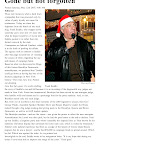

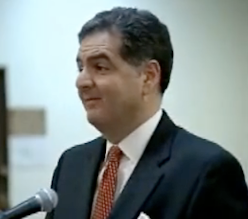
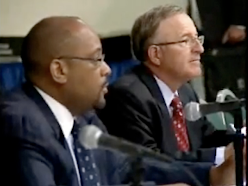
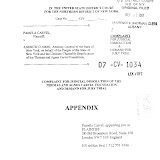

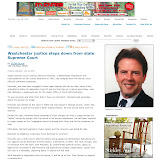
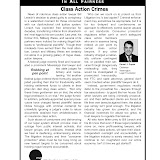

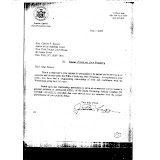
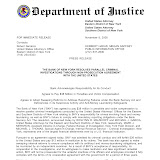
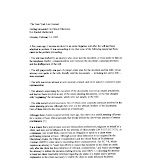

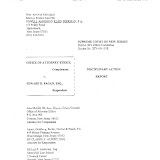
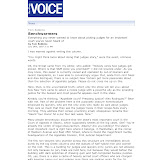

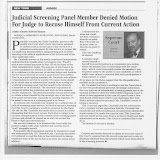



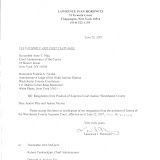
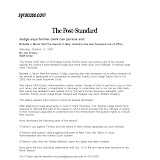
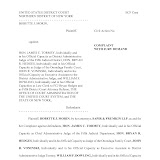

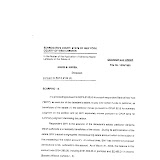
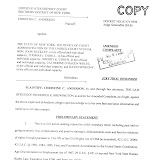
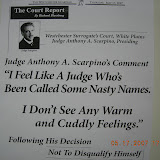
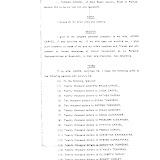
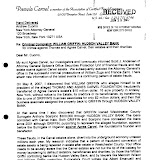
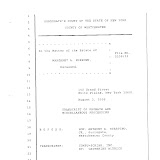
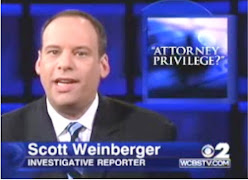
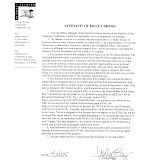

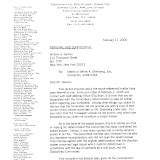
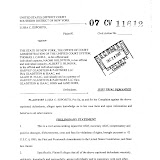
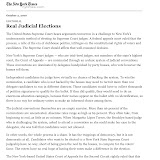
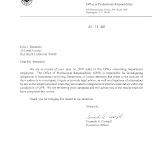
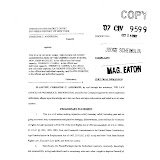
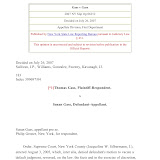
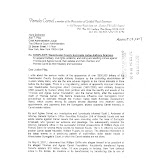

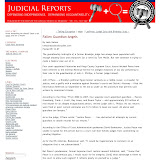
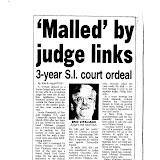
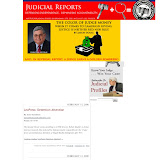
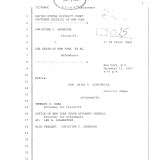
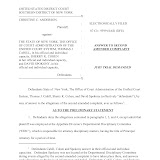
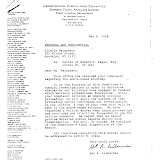
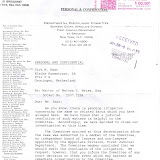
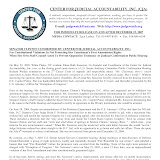


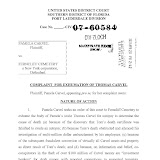
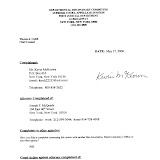
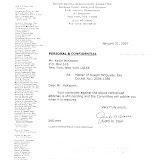
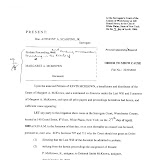
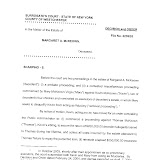
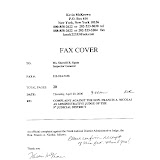

2 comments:
Federal judges have dismissed 99.88% of the complaints against them. See http://judicial-discipline-reform.org/. Even the foxes would try to appear more honorable.
the few that have been exposed are nothing, just the tip of the iceberg. They don't want to get everyone because then the whole system would crash and burn, that would be bad for business. They are con men
Post a Comment